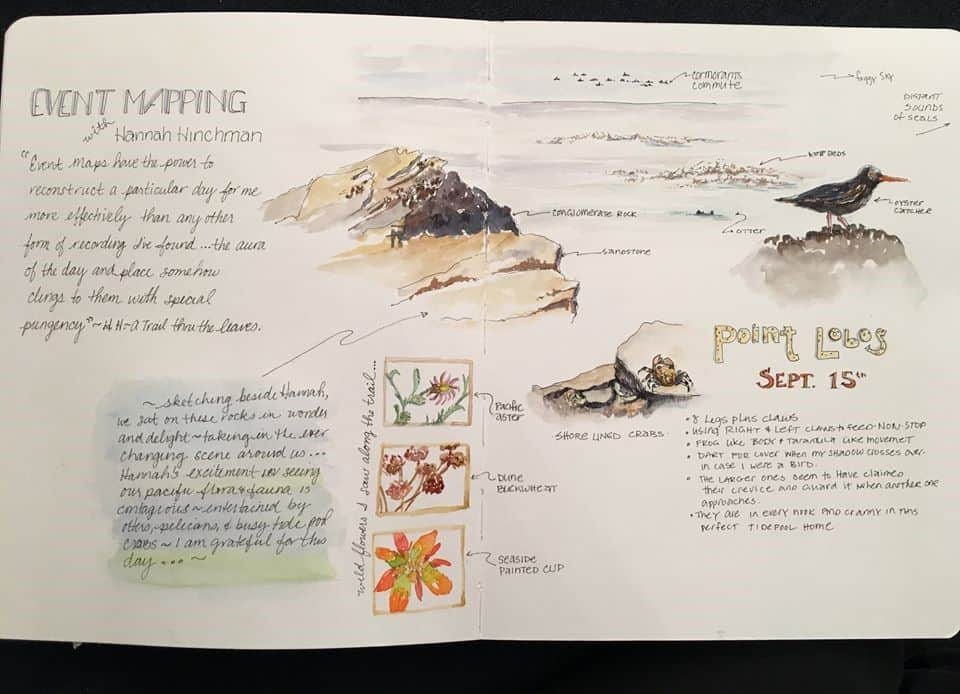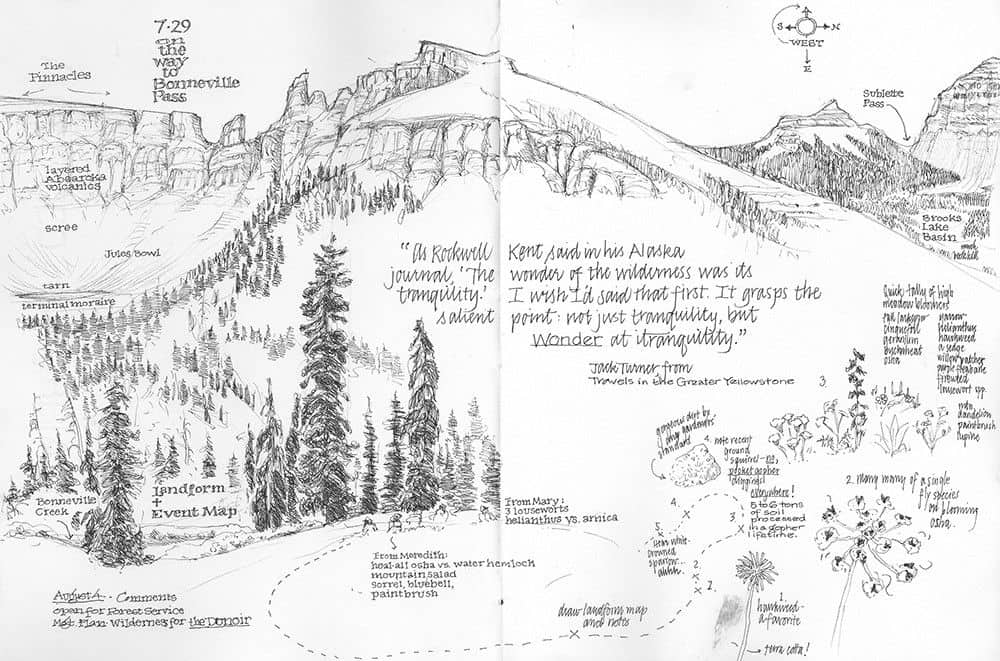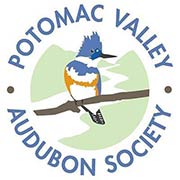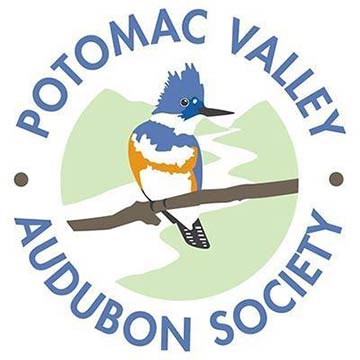News

- This event has passed.
Nature Journaling: Finding Nature at Home in April
Tuesday, April 7, 2020 @ 12:00 am - Thursday, April 30, 2020 @ 12:00 am
Monthly Nature Journaling: April 2020
Journaling Guide: Joy Bridy
Registration for this event is not required, but we encourage you to enter your contact information using the form below, so we can be in touch with future field jorunaling opportunities.
Hello Field Journal Folks! Now that we’ve all gotten somewhat used to staying home, if you’re anything like me, your attention is drawn outside to the beautiful spring that is hatching right outside our doors. Since we can’t meet in person for our regular monthly Field Journal Group through the Potomac Valley Audubon Society, let’s meet in spirit, and continue growing our field journal practice with a monthly prompt.
This weekend, the horse chestnut trees back by my workshop started breaking bud in a glorious, over-sized show of color and texture. It feels like an annual holiday that changes dates each year, usually on a bright sunny day, in sync with the early blooming ornamental cherries and fruit pear trees. I pass these trees every morning on my morning stroll, coffee cup in hand, no hurries, as the pooch sniffs and explores, catching up on what happened at our place over the long dark night.
The breaking of bud, and the accompanying lingering, reminded me of Hannah Hinchman’s field journal exercise of an Event Map. If I were to make an Event Map of my morning walk, the beginning would be most of the distance, but only a small bit of the map. There would be cinquefoil’s first leaves spotted by the maple trees, some new coyote scat by the front field, and a little tidbit on the pile of Rose of Sharon second year starts that I pulled and piled yesterday, admiring the beauty of their long roots. The majority of the map would be the Horse Chestnut trees, stopping to see the new buds, and the attention paid to these new bits of leaf life that were not there yesterday. Their bud casings are so smooth and pink/purple/green, but the new leaves start out as spikes that slowly open into their palmate 5-leaflet form. The final bit of the walk would be a bookend to the excitement and attention paid to the buds, including a brief stop to show the chickens a good batch of chickweed for their morning forage.
I did not make an Event Map this morning, deciding instead to look up Hannah and a few of her exercises, her quotes, and some images for inspiration…and then invite you to find some time this month to make your own Event Map.
In Hannah’s words:
“When I go to a new place, I often combine a semblance of a map with what I see along the way,” Hannah begins. “It has to do with coming to a place and tracking your movement through it and paying attention to what happened to you. To me, an event is whatever draws your attention. So if you’re walking along and your attention is fixed by a yarrow beside the trail, make a note of the fact that you’ve noticed it.” She goes on to explain that event maps can be as simple or elaborate as you wish, and can be any scale. Generally, they look like a meandering line that shows the route you are traveling. Scale is unimportant – you may show a few hundred feet for half the map and then the next five feet take up the rest of the event map. Legends or small drawings can be fit into the contours of the map or pulled out to the side.
“For some reason when I go back to look at these things again, they’re the most effective way to bring a time and place back. It has something to do with the sequence and the selection of things.” She thinks for a minute and continues,” That mix of the seen, the felt, the land forms you travel over, the time of day – an event map captures and encapsulates a day better than any narrative or sketches. I think it has to do with learning to see the world as a constantly unfolding event rather than a collection of things.”
-Hannah Hinchman, quoted in ‘Field Journals: Connecting People With Place’ Professional Paper for Environmental Studies, by Carolyn Duckworth, 5 December 1994
While going out to a new place is not really in the cards for us nowadays, I encourage you to approach your own home with new eyes. Do you have a yard to explore? Is there a wild bit to wander around? Do you have a patio or balcony to watch the world fly by? Look with fresh vision, as if you’ve not been there before, and map your experience. Use words and images in whatever way feels natural to you to document where your attention wanders.
Here’s some inspiration for you:
 “…On the beach with Hannah Hinchman – gaining an understanding of her method of Event Mapping – I really like how it helps me organically record things as they unfold…I will do more of this for sure.”
“…On the beach with Hannah Hinchman – gaining an understanding of her method of Event Mapping – I really like how it helps me organically record things as they unfold…I will do more of this for sure.”
– Karen Colson, The Nature Journal Club on Facebook
 – Event Map, by Hannah Hinchman, from Mono Lake website.
– Event Map, by Hannah Hinchman, from Mono Lake website.
If you are inspired by Hannah’s Event Map exercise, she has written three books:
1. A Life in Hand: Creating the Illuminated Journal, by Hannah Hinchman
2. A Trail Through Leaves: Journal as a Path to Place, by Hannah Hinchman
3. Little Things in a Big Country: An Artist and Her Dog on the Rocky Mountain Front
She teaches field journal workshops across the country, and while her work seems to be hard to find online, she is an active member of the Facebook group ‘The Nature Journal Club.’
We would LOVE to have you share your Event Map!
There are various options for you to share your creativity:
Facebook: If you use Facebook, please feel free to post on your Facebook page and use the hashtags #pvas #naturejournal
If you don’t use Facebook but would still like to share, please email your Event Map to Krista Hawley at AdultPrograms@PotomacAudubon.org with ‘Nature Journaling’ in the subject line and Krista will pick one day a week where she will upload and post the pictures on the PVAS and PVMN Facebook pages (you can email them to Krista by either scanning and emailing, or just take a picture and email that to her).
Instagram: If you use Instagram, please feel free to post on your personal Instagram page and use the hashtags: #pvas #naturejournal
If you don’t have an Instagram account, but would still like to share, follow the same procedure as emailing to Krista and we will post them to PVAS’s Instagram account when we post to PVAS’s Facebook page.
If anyone is interested, Joy Bridy follows The Nature Journal Club on Facebook and highly recommends it!
Special thanks to Carolyn Duckworth, first for sharing her thesis paper with Joy, and second for introducing her and others to the world of field journaling.
If you’d like to support our efforts to provide these online educational opportunities, consider making a tax deductible donation to our organization today at this link. If you rather not donate online, you can also mail a check to PO Box 578, Shepherdstown, WV 25443.
You can also support us by becoming a member of Potomac Valley Audubon Society at this link.
Your support means the world to us during this challenging time. Stay safe and healthy!
© 2025 · Potomac Valley Audubon—Website powered by The Downstream Project

